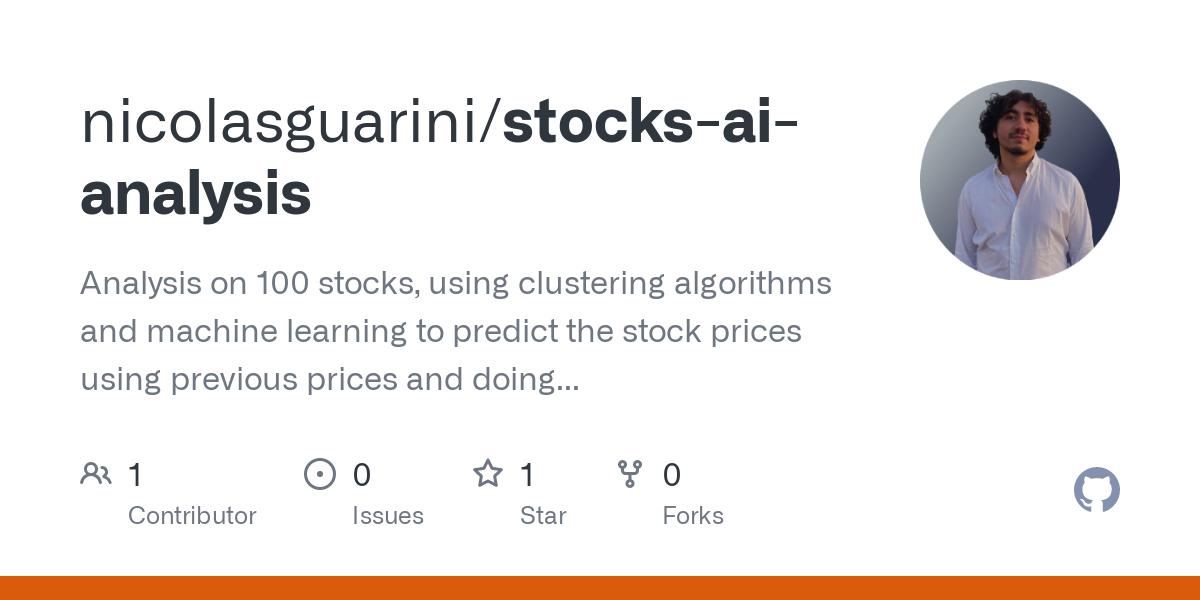20 Top Tips For Picking Stock Analysis Tool Websites
20 Top Tips For Picking Stock Analysis Tool Websites
Blog Article
Top 10 Tips For Evaluating The Strategy Customization Of Ai Stock Predicting/Analyzing Trading Platforms
Strategy customization is a key characteristic of AI platform for predicting and analyzing stocks which allows traders to customize the platform according to meet their particular trading needs as well as their risk tolerance and market conditions. A platform with flexible options for customization can dramatically enhance your trading effectiveness. Here are 10 suggestions for evaluating the customization capabilities of platforms.
1. Evaluate Pre-Built Strategy Templates
A variety of templates. Find out if the platform has a wide selection of built-in strategies that are suitable to suit different types of trading (e.g. day trading, swing trading, or long-term investment).
Usefulness: Determine the ease with which these templates could be modified to meet your needs.
Performance history: Make sure that the platform contains previous data on performance that can be used to create the strategic plans that have been pre-built.
2. Review the effectiveness of Custom Strategy Creation
Drag-and-drop tools: Find platforms that offer intuitive drag-and-drop interfaces for creating customized strategies.
Coding options: Check if the platform supports customized programming (e.g., Python, R or other proprietary scripting languages) for advanced users.
Flexibility: Ensure the platform lets you define your entry/exit parameters as well as risk management metrics as well as other crucial elements of your plan.
3. Check for Backtesting Capabilities
Data historical: See whether there is enough facts to back-test your strategies.
A parameter that can be customized: Ensure you have the ability to adjust parameters during backtesting (e.g. indicators and timeframes).
Performance metrics: Find out if the platform provides detailed measurement of performance (e.g. win rate Sharpe ratio drawdown) for backtested strategies.
4. Evaluate Real-Time Strategy Testing
Paper trading or simulation Make sure the platform is compatible with paper trading that allow you to evaluate trading strategies in real-time and without risking money.
Live testing: Determine whether you're able to test your strategies on real-world markets with only a small amount of capital.
Real-time adjustments: Check whether you are able to tweak strategies according to market conditions.
5. Evaluation of Integration based on Technical Indicators
Libraries for indicators: Make sure the platform includes a complete toolkit for technical analysis (e.g. MACD, RSI and moving averages).
Custom indicators - Make sure that you are able to import or create your own custom indicators.
Combination of indicators Look to see if the platform allows the combination of multiple indicators to create more complex strategies.
6. Check for Risk Management Tools
Stop-loss/take-profit: Ensure the platform allows you to set stop-loss and take-profit levels within your strategies.
Position sizing: Check whether you have the ability to establish position sizing rules (e.g., fixed amount percent of portfolio) to reduce the risk.
Risk-reward: Check if your platform lets you define risk-rewards for each trade or strategy.
7. Evaluate Multi-Asset Strategy Support
Asset classes: Ensure the platform supports strategies across multiple asset classes (e.g. ETFs, stocks and forex).
Strategies that cross assets: You could develop strategies that incorporate multiple asset categories (e.g. pairs trading, hedges).
Market coverage: Find out if the platform offers the services you need (e.g. US, international or copyright).
8. Assess Automation & Execution
Automated trading: Ensure the platform supports automated execution of strategies that are based on established rules.
Order types - Make sure the platform can support a variety of order types to execute strategies (e.g. stop limit, market or stop).
Latency Check: Ensure that the platform is able to allow trades to be executed with the least amount of latency. This is especially important when it comes to high-frequency strategies.
9. Check for Strategy Optimization Tools
Parameter optimization: Ensure the platform offers tools for optimizing strategy parameters (e.g. grid search or genetic algorithm).
Machine learning: Ensure the platform has machine learning to help refine and optimize strategies.
Analyze scenarios: Determine if the platform allows you to test different strategies in various market situations (e.g. bear or bull, volatile).
Review the User Feedback and Community Feedback
Feedback from users Research user feedback to determine the efficacy of the platform's the development of a customized strategies.
Community forums: See whether you can find forums where users can discuss and share their custom strategies.
Support resources: Ensure that the platform has tutorials, webinars, or documents that will help users develop and improve their strategies.
Bonus Tips
Trial period: Take advantage of a free trial or demo to test the platform's strategy and customization capabilities.
Scalability: The platform needs to be able to support more complex trading strategies as you evolve.
Customer support: Find out if there is support for your questions or concerns related to the strategy.
The following tips can help you assess the ability of AI trading platforms to modify their strategies. You'll be able to decide which one best fits your trading needs and allows for you to refine and implement your strategy. A platform that offers powerful customization options will allow users to be able to change market conditions and boost the performance of your trading. Have a look at the recommended see post for ai stock market for site examples including canadian ai stocks, trading chart ai, coincheckup, stock market software, ai stock trading, copyright financial advisor, ai stock market, ai stock trading app, ai for investing, ai investing and more.
Top 10 Tips For Evaluating The Regulatory Conformity Of Ai Stock Prediction/Analyzing Trading Platforms
When it comes to evaluating AI trading platforms, regulatory compliance is crucial. Compliance is important because it ensures the platform adheres to rules and legal frameworks. It also safeguards user's data. These are the top 10 suggestions for assessing the regulatory compliance of these platforms:
1. Verify the validity of your license and registration.
Regulators: Make sure the platform is registered with and regulated by the appropriate financial regulatory bodies (e.g., SEC in the U.S., FCA in the UK, ASIC in Australia).
Verify the broker partnership: If your platform integrates with brokers and brokers, be sure these brokers are licensed and regulated.
Public records: You can look on the website of the regulatory body to find out if the platform is registered and if there has been any violations in the past.
2. Measure Data Privacy Compliance
GDPR when operating in the EU or providing services to customers in the EU, the platform should comply with the General Data Protection Regulation.
CCPA : California Consumer Privacy Act (CCPA) conformity should be checked by the users.
Policies for handling data. Check the privacy policies and ensure that it clarifies the manner in which user data is used to collect, share, and kept.
3. Evaluation of Anti-Money Laundering Measures
AML policies: Ensure that your platform is armed with a robust AML policy to identify and stop any laundering of money.
KYC procedures - Ensure that the platform complies with Know Your Customer procedures for verifying user identities.
Monitoring transactions: Find out if the platform is capable of monitoring transactions and reporting any suspicious activity to the appropriate authorities.
4. Make sure that you are in compliance of your business with Trading Regulations
Market manipulation: Ensure that the platform is equipped with strategies to stop market manipulations, like swap trading or spoofing.
Types of orders. Check to see whether your platform is in compliance with the rules for order types.
Best execution: Examine to see if the website adheres best execution practice, which ensures that trades will be executed at the cheapest price.
5. Cybersecurity compliance assessment
Data encryption: Make sure that the platform safeguards users' data in transit and when it is in rest with encryption.
Response to incidents: Verify that the platform has a plan for incident response in place to deal with cyber-attacks or data breaches.
Verify certifications.
6. Evaluate Transparency and Disclosure
Fee disclosure: Make sure the website discloses all fees that are hidden, as well as any extra fees.
Risk disclosure: Check if the platform has clear risk disclosures, specifically when it comes to high-risk trading or leveraged strategies.
Performance reporting - Examine for accurate and transparent performance reports that are provided by the platform for its AI models.
7. Verify that you are in the compliance of international regulations
Cross-border trading: If your trading involves international trade it is important to make sure that the platform you use meets all requirements for regulatory compliance in every jurisdiction.
Tax reporting: Find out whether the platform has tools or reports to assist users comply with tax laws.
Security: Make sure that the platform complies with international sanctions and is not able to trade with prohibited entities or countries.
8. Review the record-keeping process and audit trails
Transaction records: Verify that the platform keeps complete records for purposes of regulation and for audit.
User activity records: Verify whether the platform is recording the user's activity, including logins and transactions as well as modifications to settings for your account.
Audit-readiness: Find out if the platform will be equipped to provide all necessary documentation and logs needed for a possible regulatory audit.
9. Verify compliance with AI-specific Regulations
Algorithmic Trading Rules: If your platform supports algorithmic trading, ensure it adheres to rules such as MiFID II (in Europe) or Reg SCI (in the U.S.).
Fairness and bias: Determine if the platform monitors and mitigates biases in its AI models to ensure fair and ethical trading.
Explainability - Make sure that the system is able to provide clear and concise explanations regarding AI-driven decisions, predictions, etc. as required by specific rules.
Review User Feedback & the Regulatory History
User reviews: Read the feedback of users and then compare it with the platform's conformance to regulatory standards.
History of regulation: Determine whether the platform has any history of regulatory violations and penalties, fines or fines.
Third-party auditors: Find out if the platform is regularly audited by a third party to ensure it's adhering to regulations.
Bonus Tips
Legal consultation: You may want to consult a legal expert to review the platform's compliance with relevant laws.
Trial period. You can use the trial or demo of the platform to test the compliance features of the platform.
Support for customers - Ensure that the platform has the capacity to help with any compliance-related issues or concerns.
Check these points to determine the compliance with regulations and protect of your rights. Compliance not only lowers the risk to legality, but also improves confidence in the service of a platform. View the best best ai trading software for site examples including best ai trading app, best stock analysis website, ai stocks to invest in, ai hedge fund outperforms market, ai stocks to invest in, ai stock trading bot free, ai investment advisor, ai for stock trading, ai investing app, ai based trading platform and more.